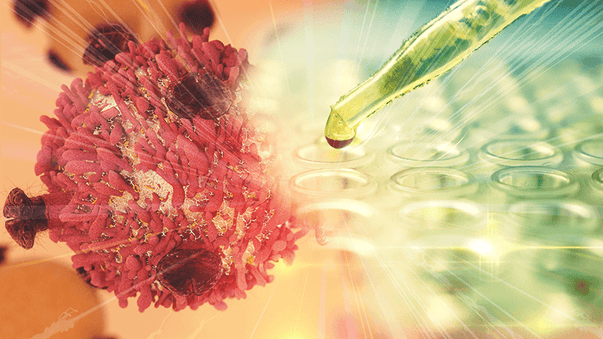ALS CRISPR Therapy for a Future Stephen Hawking

The death of Stephen Hawking last week highlights the importance of research on amyotrophic lateral sclerosis (ALS). Hawking, one of the leading theoretical physicists and cosmologists of our time, and a visionary thinker interested in the future of our species, was diagnosed with early-onset, slow-progressing ALS when he was 21. The disease confined him to a wheelchair for most of his life, progressively depriving him of his abilities until his death at 76.
Most ALS victims don’t live that long. Hal Finney (see Pulse 14), considered a hero in cryptography (two words: PGP and Bitcoin), human enhancement, and future studies circles, was diagnosed with ALS in 2009. He died in 2014 and was cryopreserved by the Alcor Life Extension Foundation.
Now, Stanford University scientists have used CRISPR gene editing technology to improve our understanding of the genetic mechanisms of ALS (see below). By systematically knocking out genes, the researchers found that about 200 genes either helped to protect a brain cell from the toxic proteins that kill neurons in ALS, or made it more vulnerable to them. One gene, which codes for a protein called Tmx2, seems to play an important role.
“We could imagine that Tmx2 might make a good drug target candidate,” said researcher Michael Haney. “If you have a small molecule that could somehow impede the function of Tmx2, there might be a therapeutic window there.”
“We’re still in early phases, but I think figuring out exactly what Tmx2 normally does in a cell is a good place to start - that would hint at what functions are disturbed when these toxic species kill the cell, and it could point to what pathways we should look into,” added researcher Nicholas Kramer.
CRISPR helps understanding the progression of ALS. National Institutes of Health (NIH)-funded researchers at Stanford University used the gene editing tool CRISPR-Cas9 to rapidly identify genes that might modify the severity of amyotrophic lateral sclerosis (ALS) and frontotemporal dementia (FTD) caused by mutations in a gene called C9orf72. The results of the search, published in Nature Genetics, uncovered a new set of genes that may hasten neuron death during the disease. According to the Stanford scientists, the findings are a step toward understanding the progression of ALS and could even prepare the way for new therapies.
CRISPR gene editing for RNA corrects protein imbalance in cellular model of dementia. Salk Institute scientists have created CRISPR molecular scissors that target not DNA, but RNA. This is a significant development because many genetic diseases are caused by problems with RNA, a working copy of DNA that is translated into proteins.The new method, called CasRx, opens up the vast potential of RNA and proteins to genetic engineering, giving researchers a powerful way to develop new gene therapies as well as investigate fundamental biological functions. A research paper published in Cell details how the researchers used CasRx to correct a protein imbalance in cells from a dementia patient, restoring them to healthy levels.
Advances toward understanding molecular mechanisms of learning. Researchers at the Okinawa Institute of Science and Technology Graduate University (OIST) have modeled the molecular basis of learning in the cerebellum, a part of the brain that receives sensory input and coordinates voluntary movements. A study published in Cell Reports supports the idea that learning depends on balancing two molecular processes in synapses: long-term potentiation (LTP), in which the connection between two neurons is strengthened, and long-term depression (LTD), in which the connection between two neurons is weakened.
Nanospears deliver genetic material to cells with high precision. In a step toward accelerating the deployment of new gene therapies, UCLA scientists have developed a new method that utilizes microscopic splinter-like structures called “nanospears” for the targeted delivery of biomolecules such as genes straight to patient cells. A study published in ACS Nano describes remote-controlled, needle-like nanospears capable of piercing membrane walls and delivering DNA into selected cells. According to the researchers, the new technique, which can ferry biological materials to cells with pinpoint accuracy, overcomes many of the existing barriers to effective gene modification.
‘Body on a chip’ technology permits accurate evaluation of drug effects. MIT engineers have developed “body on a chip” technology that could improve drug evaluation. A study published in Scientific Reports describes a microfluidic platform that connects engineered tissue from up to 10 organs, allowing them to replicate human-organ interactions. Using the new platform, the researchers can accurately replicate human organ interactions for weeks at a time, allowing them to measure the effects of drugs on different parts of the body and find out, for example, whether a drug that is intended to treat one organ will have adverse effects on another.
High performance imaging of living brain tissue. Physicists and biologists at the University of the Basque Country, and collaborating labs, have developed a new microscopy technique that permits imaging all the cells within a specified area of living brain tissue. A research paper published in Cell describes a new microscopy technique, dubbed “SUSHI” (Super-resolution Shadow Imaging), designed to improve the imaging of cells in living brain tissue. SUSHI permits labeling in one sweep the tiny space full of liquid surrounding brain cells, thus obviating the need to individually label all the cells that one is intending to analyze.
More Articles
Don't miss a beat! In our Pulse Newsletter, Thrivous curates the most important news on health science and human enhancement, so you can stay informed without wasting time on hype and trivia. It's part of the free Thrivous newsletter. Subscribe now to receive email about human enhancement, nootropics, and geroprotectors, as well as company news and deals.
Read more articles at Thrivous, the human enhancement company. You can browse recent articles in Thrivous Views. See other Pulse Newsletter articles. Or check out an article below.
-
DNA Nanotechnology for Cancer Therapy
In recent bioscience and medical news, the biological computing research results released by the University of Delaware (see below) are worth ...
-
Dr. Parker on ALCAR and Alpha Lipoic Acid
I mentioned in my last article that I was impressed with Alpha Neuroprotector because it targeted many different needs of ...


